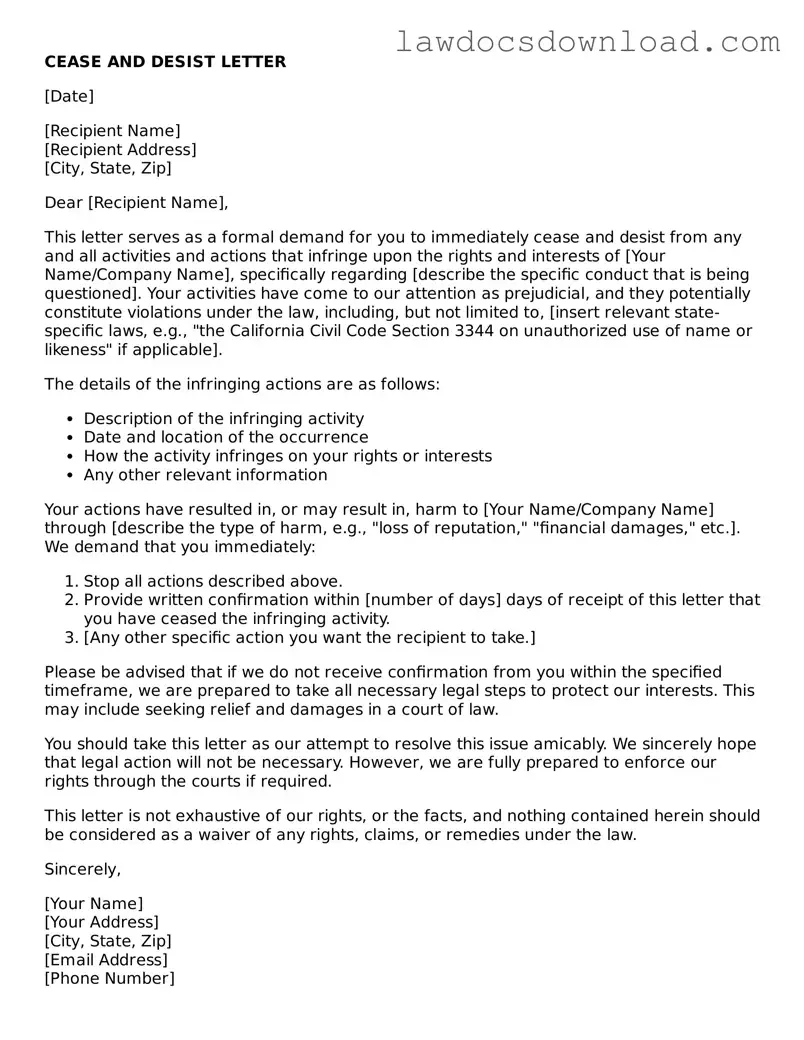CEASE AND DESIST LETTER
[Date]
[Recipient Name]
[Recipient Address]
[City, State, Zip]
Dear [Recipient Name],
This letter serves as a formal demand for you to immediately cease and desist from any and all activities and actions that infringe upon the rights and interests of [Your Name/Company Name], specifically regarding [describe the specific conduct that is being questioned]. Your activities have come to our attention as prejudicial, and they potentially constitute violations under the law, including, but not limited to, [insert relevant state-specific laws, e.g., "the California Civil Code Section 3344 on unauthorized use of name or likeness" if applicable].
The details of the infringing actions are as follows:
- Description of the infringing activity
- Date and location of the occurrence
- How the activity infringes on your rights or interests
- Any other relevant information
Your actions have resulted in, or may result in, harm to [Your Name/Company Name] through [describe the type of harm, e.g., "loss of reputation," "financial damages," etc.]. We demand that you immediately:
- Stop all actions described above.
- Provide written confirmation within [number of days] days of receipt of this letter that you have ceased the infringing activity.
- [Any other specific action you want the recipient to take.]
Please be advised that if we do not receive confirmation from you within the specified timeframe, we are prepared to take all necessary legal steps to protect our interests. This may include seeking relief and damages in a court of law.
You should take this letter as our attempt to resolve this issue amicably. We sincerely hope that legal action will not be necessary. However, we are fully prepared to enforce our rights through the courts if required.
This letter is not exhaustive of our rights, or the facts, and nothing contained herein should be considered as a waiver of any rights, claims, or remedies under the law.
Sincerely,
[Your Name]
[Your Address]
[City, State, Zip]
[Email Address]
[Phone Number]
